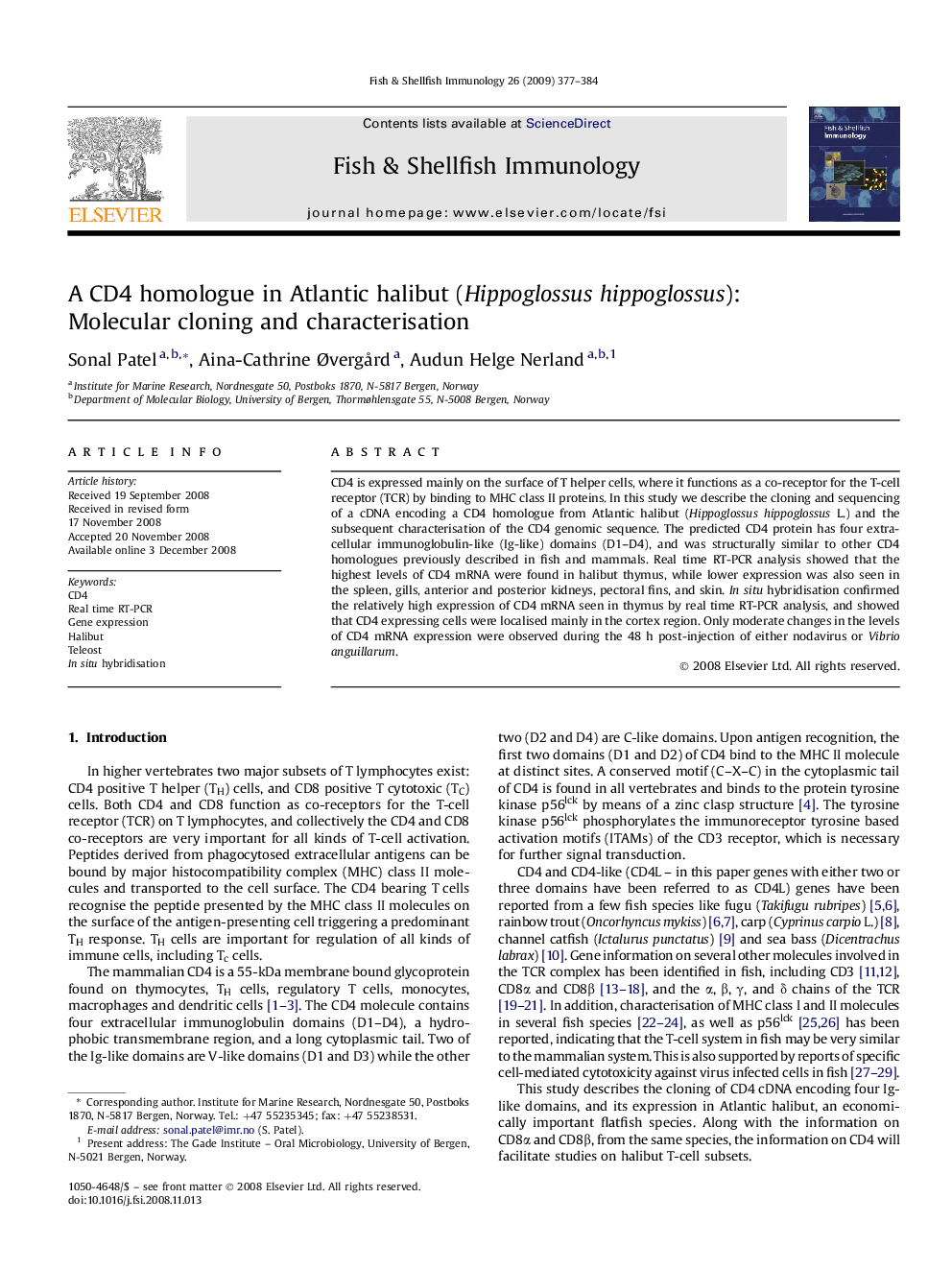| Article ID | Journal | Published Year | Pages | File Type |
|---|---|---|---|---|
| 2432963 | Fish & Shellfish Immunology | 2009 | 8 Pages |
CD4 is expressed mainly on the surface of T helper cells, where it functions as a co-receptor for the T-cell receptor (TCR) by binding to MHC class II proteins. In this study we describe the cloning and sequencing of a cDNA encoding a CD4 homologue from Atlantic halibut (Hippoglossus hippoglossus L.) and the subsequent characterisation of the CD4 genomic sequence. The predicted CD4 protein has four extracellular immunoglobulin-like (Ig-like) domains (D1–D4), and was structurally similar to other CD4 homologues previously described in fish and mammals. Real time RT-PCR analysis showed that the highest levels of CD4 mRNA were found in halibut thymus, while lower expression was also seen in the spleen, gills, anterior and posterior kidneys, pectoral fins, and skin. In situ hybridisation confirmed the relatively high expression of CD4 mRNA seen in thymus by real time RT-PCR analysis, and showed that CD4 expressing cells were localised mainly in the cortex region. Only moderate changes in the levels of CD4 mRNA expression were observed during the 48 h post-injection of either nodavirus or Vibrio anguillarum.
